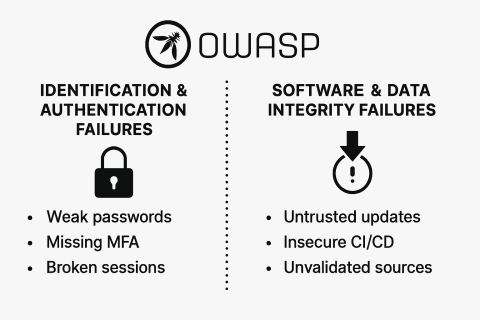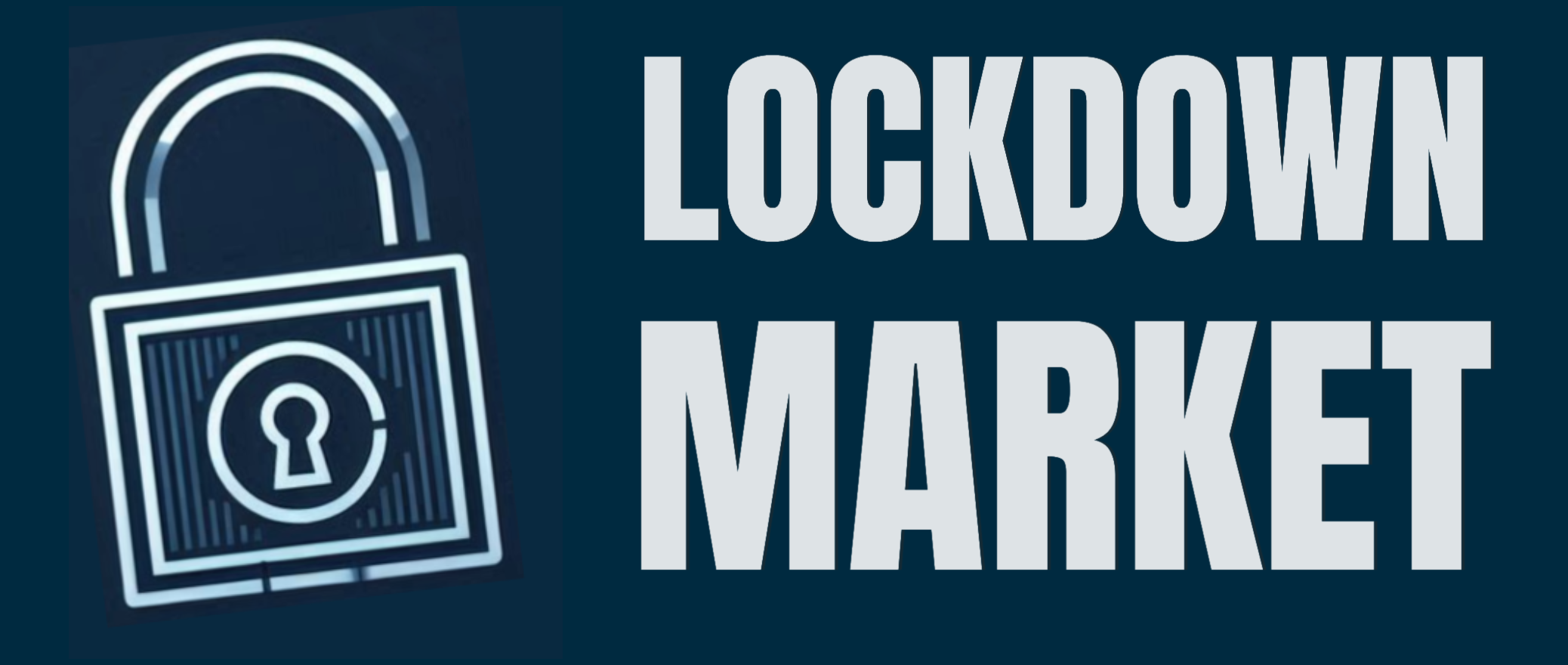
Introduction
The OWASP Top 10 is a vital resource for anyone building or securing web applications. Among its most critical categories are Identification and Authentication Failures and Software and Data Integrity Failures—two areas where missteps can lead to devastating breaches. This article explores real-world examples, prevention techniques and practical guidance to help professionals strengthen their application security posture.
1. Identification and Authentication Failures
Authentication is the gateway to secure systems. When it fails, attackers can impersonate users, hijack sessions and exploit weak credentials.
Common Issues
- Weak passwords (e.g., “password123”, “admin”)
- Absence of multi-factor authentication (MFA)
- Failure to validate user identity against trusted sources
- Broken or persistent sessions that aren’t properly terminated
Real-World Examples
- Pwned Passwords: Credential stuffing attacks using breached username/password pairs reused across platforms.
- Verkada Breach (2021): Hackers accessed 150,000 security cameras due to hard-coded super admin credentials in internal systems.
Prevention Techniques
- Enforce Strong Password Policies: Minimum 16 characters, mixed character sets, regular rotation.
- Use MFA: Combine password, token, biometric and location-based factors.
- Login Throttling: Limit repeated login attempts to prevent brute-force attacks. Implement lockout thresholds and observation windows.
- Session Management: Ensure sessions are terminated after use and monitored for anomalies.
2. Software and Data Integrity Failures
Modern applications rely heavily on third-party components, CI/CD pipelines and automated updates. Without proper oversight, these can become vectors for supply chain attacks.
Common Issues
- Trusting unverified plugins, libraries or modules
- Insecure CI/CD pipelines that auto-deploy updates
- Lack of validation for software origin and integrity
Real-World Examples
- SolarWinds Orion Breach (2020): Malware injected into a software update compromised 18,000 customers.
- Codecov Bash Uploader Attack (2021): A compromised uploader sent customer data to attackers via an unauthorised IP.
Prevention Techniques
- Use Digital Signatures: Verify software authenticity and integrity using asymmetric cryptography.
- Consume Trusted Repositories: Ensure dependencies from npm, Maven or other package managers are vetted and secure.
- Review Code and Config Changes: Apply a risk-based approach to CI/CD pipelines, especially for critical components. Monitor third-party patches and apply them promptly.
Conclusion
Identification, authentication and integrity failures are not just technical oversights—they’re business risks. By applying the OWASP Top 10 principles, organisations can proactively defend against credential abuse, supply chain compromise and session hijacking.
Keep learning. Keep fixing. Keep securing.
Take Action: Strengthen Your Application Security
Don’t wait for a breach to expose your vulnerabilities. Use the OWASP Top 10 as your blueprint for secure development and deployment.
- Review your authentication flows and session management practices.
- Audit your CI/CD pipeline and third-party dependencies.
- Implement digital signatures and trusted repositories for software updates.
- Educate your team on secure coding and supply chain risks.
Ready to improve? Start with the checklist below and share it with your dev and security teams.
Comparison Checklist: Identification vs. Integrity Failures
| Category | Common Weaknesses | Real-World Example | Recommended Controls |
|---|---|---|---|
| Identification & Authentication Failures |
|
Verkada breach due to hard-coded super admin credentials |
|
| Software & Data Integrity Failures |
|
SolarWinds Orion breach via compromised update |
|
- Log in to post comments

Comments